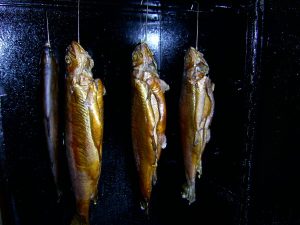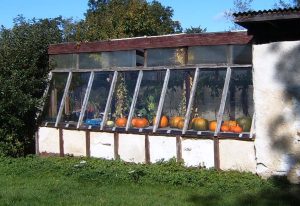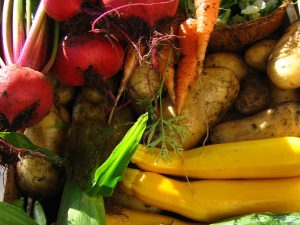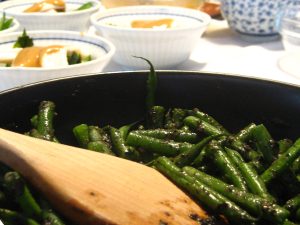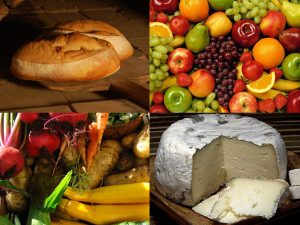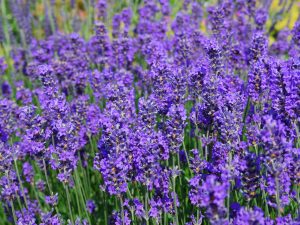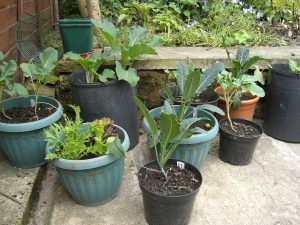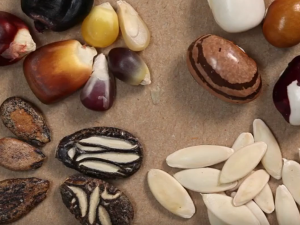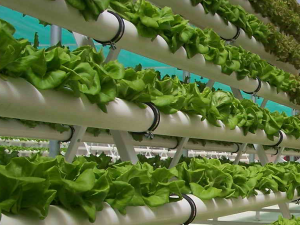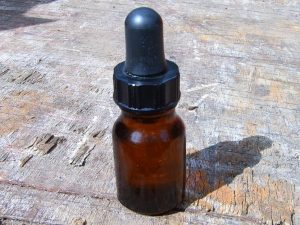Herbs - introduction

“Fresh herbs really belong anywhere you put them.” – Alex Guarnaschelli
Contents
What are herbs?
In the home-use sense, a herb is a plant whose leaves (and sometimes stems) are valued for flavouring, food, fragrance or medicinal qualities (the botanical definition is a little different). With spices, a part other than the leaf is used – root, stem, bark, seed or flower. Spices are generally more potent than herbs, so less is needed when cooking.

Herbs, both wild and cultivated, have been used in civilisations around the world for tens of thousands of years – long before records began. In France, the Lascaux caves contain drawings of herbs that have been carbon dated back to roughly 20,000 BCE. In the 5th century BCE, famous physician Hippocrates catalogued 400 herbs commonly in use at the time. Early documents show that herb schools existed in Egypt 5000 years ago; herb use in Chinese and Indian medicines date back at least 3000 years; and there are several herbal references in the Bible.

Herb gardens in Europe during the Middle Ages were often in a rectangular, regimented grid format and located close to the medic’s residence and infirmary. Ironically, these same herbs and spices were commonly used to disguise the flavour of putrid foodstuffs, which regularly passed their ‘best by’ date without the benefits of refrigeration. Unfortunately, around this time, herbalists ran the risk of being burnt by the Church as witches and pagans, which was a bit of a drawback.
In some cultures, distinctive herbs have become a signature part of the cuisine (e.g. basil in Italy). In the modern world, herbs are one of the fastest growing horticultural industries due to increasing interest in diet and natural products as part of an holistic approach to health. The disadvantage of this rise in popularity is that herbs are sometimes intensively farmed in non-organic monocultures, highly processed (for example, in gelatin-encased capsules) and, in the case of the supplement industry, they divert money to corporations and away from small, local businesses. Buying plastic bottles of processed herbs off-the-shelf, although convenient, doesn’t come close in terms of taste, sustainability and health & community benefits to growing or collecting herbs from nature.
Some commonly used herbs

What are the benefits of herbs?
Personal
Herbs are a health-giving, low-calorie way of creating a twist, theme or accent in your meal, and improving flavour, aroma, texture and colour. Particularly when used fresh / raw, they can provide many vitamins, trace minerals, good oils and antioxidants in your diet, and many have anti-inflammatory and anti-microbial properties. As with most foods, the fresher and less-processed herbs are, the better they are for you. The health-conscious often add herbs to green smoothies.
If you grow your own, the benefits are increased. The satisfaction of growing something to eat can be immense. Your home-grown plants will provide you with cheaper, fresher, organic produce, and in the summer, aromatic fragrances on the breeze are blissful, maybe conjuring up nostalgic memories of summer holidays. By weight, herbs can be expensive, so if you use herbs a lot, you can save yourself quite a bit of money by growing your own.

Environmental
When it comes to herbs, you can reduce carbon emissions to zero and food miles to food metres, with a little herb garden near the kitchen, or herbs in pots already in the kitchen. Plants and flowers (like beautiful purple chive heads or blue rosemary flowers) can be colourful and serve as wonderful forage for bees.

Democracy
Providing things for ourselves in communities reduces the need for supermarkets, helps prevent extraction, decentralises power away from corporations (which makes it more difficult for them to corrupt democracy) and democratises work.
Community
Exchanging home-grown produce strengthens community bonds, and in case of any kind of collapse scenario (broken supply chains, environmental destruction, financial crash, war, civil unrest etc.), we’re going to have to look after ourselves in our communities, and so the more people with useful skills the better.

What can I do?
The best way to become confident around herbs is to practise using and growing them. Pick a common one (or a group – e.g. Mediterranean herbs) and experiment. You can also forage yourself for wild herbs. The most obvious example of this is ramsons (wild garlic), wonderfully prolific in early spring when there’s little else around. Garlic mustard (aka ‘Jack-by-the-hedge’) is also popular.
Herbs are generally a safe set of plants to play with, but if you’re foraging rather than cultivating or buying, the usual safety rules about identification apply. If you’re a complete novice, a good choice to start with is basil. Take a small amount of a leaf and taste. What does it remind you of? What sort of meal might you include it in? Would you happily continue eating it raw? If the answer to this last question is yes, start adding it in small quantities to a salad, or sprinkling some chopped or shredded on a dish when you serve up (e.g. on a pizza).

With all herbs, research recipes and be conscious when eating, noticing the properties it brings to the meal. Remember, the right time to add the herb to the dish will vary; dried and more robust herbs (e.g. thyme) usually go in early in the cooking process, to give time for flavours to infuse. Fresh, delicate leaves (basil, marjoram) should be stirred in towards the end, and they will keep their distinctive essence. Sometimes bundles of herbs are tied together and simmered with a stock, stew or casserole and then taken out again before serving. This bundle is called a bouquet garni and traditionally included bay, thyme and parsley, sometimes wrapped or tied to a piece of leek or celery.

Growing your own herbs is easy, and they come in all sizes – small plants for pots and window boxes (basil, chives, parsley etc.), shrubs (e.g. rosemary – with its pretty blue flowers) and trees (bay – which also has the advantage of being evergreen). Nearly all herbs can be grown from seed but if you’re a complete beginner be kind to yourself; rather than starting from seed, begin by buying a plant from a shop or garden centre and tending to its needs. Although mint is possibly the easiest plant to grow, basil is an excellent plant for training you in herb care because it’s a ‘mineshaft canary’, drooping the minute it doesn’t have enough water, but reviving as soon as you give it a drink. Basil, like many herbs, benefits from a little water each day rather than a deluge once a week, and so will very quickly get you focused on plant care – essential if you are going to be growing your herbs in pots. Remember, basil is a delicate plant and will certainly die outside in the winter.

When taking basil for your meal, use scissors to cut just above a pair of leaves. This will give you nice tender leaves for your dinner; you can also chop up the soft stem and use it, but importantly, the small leaves left behind will be encouraged to grow and bush out the plant. If you don’t do this, your herb plant will grow tall and spindly with lots of stem and few leaves – precisely what the home chef doesn’t want.
When selecting any herb to grow, use the trick of rubbing the leaf gently between thumb and forefinger and smelling. Not all varieties will be right for you, for example if you want tarragon for cooking, you need the French variety prized for its sweet liquorice flavour, not the more bitter Russian (‘false tarragon’) variety. And there are many different mint types, some like ‘Pineapple Mint’ are very exotic-sounding (and this one is especially pretty as it’s variegated). In fact mint is very easy to grow from a cutting so if you have a friend with one you like, ask for about 3 stems, remove the lower leaves, put it in a jar of water and after a week or two, they’ll start growing little white roots from a node (where the leaf joins the stem) and you’ll be able to plant it out. Don’t be afraid to ask friends for cuttings or a small amount of root, because herbs, if they like where they’re planted, will grow rapidly. Oregano and mint are especially spreading and lots of gardeners grow them in pots in the ground to stop them getting out of hand.

A good idea for growing herbs is a ‘herb spiral’. Positioned near to your kitchen for ease of access, you build a spiral of whatever material you have to hand – stone, slate, bricks etc. – and fill it with soil. This way, you can grow a range of different herbs in a small space because a) you’re growing vertically; b) herbs that prefer full sun can be on one side, herbs that don’t can be on the other; and c) the top will be drier than the bottom, so moisture-loving plants can be at the bottom. See here for more info.

If you want to try preserving your harvest by drying, perhaps for teas, you’ll find some herbs are easier to work with than others. As a general rule, woody types (rosemary, sage) dry more easily than more succulent ones (basil, marjoram). Also remember that gradually, over time, your preserved herb will lose it’s colour, flavour and medicinal benefits, so it’s best to regularly use up and replace. You can also preserve using oil, either in a concentrate form like a pesto, or an oil infusion with the leaf removed after about a month, to prevent it going mildewy. Usually olive oil is the most stable oil to use as it has the lowest water content, so it’s less likely to go rancid. If you’re feeling adventurous you could have a go at preserving in vinegar (e.g. chive flower vinegar), honey (e.g. sage honey, to relieve a sore throat) or even vodka, as a tincture or tonic.
Further resources
- Step-by-step guides to growing 20 different herbs
- Herb Society: promoting the use and enjoyment of herbs
- Directory of culinary and medicinal herbs – great resource
- Herb recipes
- Encyclopedia of Herbs & Spices
Thanks to Martina Slater of Foxhollow Nurseries for information.

